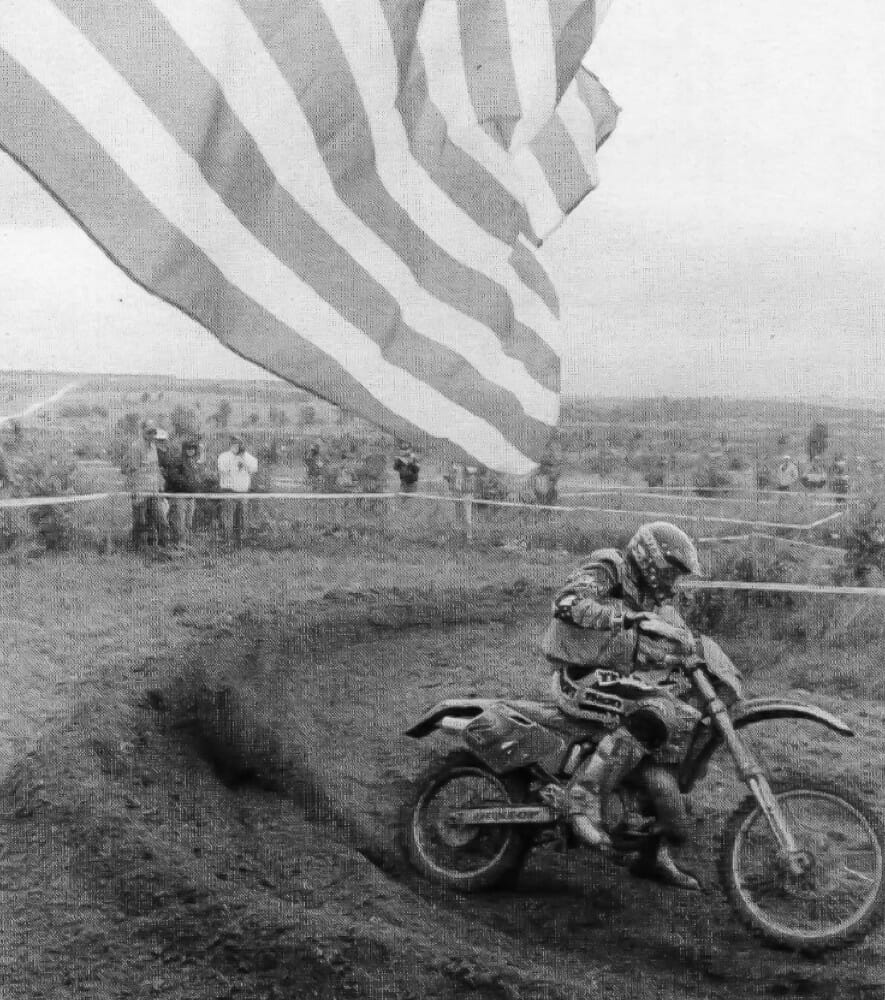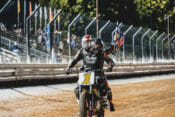Cycle News Archives
COLUMN
This Cycle News Archives edition is reprinted from a past Cycle News issue. CN has hundreds of past Archives columns in our files, too many destined to be archives themselves. To prevent that from happening, we will be revisiting past Archives articles while still planning to keep fresh ones coming down the road -Editor.
The American ISDE-bacle
By Scott Rousseau
Not having hosted an International Six Day Enduro since 1973, hope was high that America would be able to show the world that it could host a successful, world-class off-road event when it returned to the United States in 1994.
The 69th running of the event was hosted by Tulsa Trailriders on the 33,000-acre John Zink Ranch, and when it was over, most of the competitors agreed that it was one of the most grueling ISDE events ever. Of the 540 entrants, only 330 of them saw the finish line after six days of battling the brutally rocky Oklahoma terrain. Team Italy won the event, which should have been trumpeted as a resounding success.

Instead, it was panned as an embarrassing failure.
The problems began when, after promoting the event as an opportunity for spectators to view a truly historic international competition, a bizarre decision to not allow anyone access to the event completely froze out spectators, many of who had trekked hours or days to attend the ISDE. A shuttle service that was used to carry fans to and from the event on Tuesday and Wednesday was abruptly halted on Wednesday evening after it was announced that spectators would be denied access to the grass-track special tests. Furthermore, in a move that was obviously influenced by the insurance underwriter, children under 16 years old would not be allowed on the ranch property at all as of Thursday morning.
To make matters worse, event promoter Jim Long had promised “live coverage” of the event via a Jumbotron-style large-screen television, but the screen had already been removed on Tuesday, following a dispute between Long and the television crew. The end result was that the spectators would have no view of the riders in action, except when they rode into the work area.
According to Cycle News’ coverage of the event, the spectators were, not surprisingly, perturbed at their treatment.
“This is pretty sad,” one spectator from Arkansas told Cycle News. “They took our money at the gate, gave us this piece of paper saying that we couldn’t go anywhere, then gave us another piece of paper to fill out and mail back if we wanted our money back. In that order! We’ll probably just turn around and go home.”
Many did, but others stayed, forcing the promotional team to rethink its earlier decision and relent to allow some viewing access of the special tests. The solution was a single 50-by-100-foot pen that was constructed about 25 feet from the corner of the grass-track test, and children under 16 were still refused admittance. Reportedly, this was because ranch owner John Zink was concerned about spectators being hit by an errant motorcycle.
But the event itself was run without many glitches, even though the USA Trophy and Junior teams were never in the hunt for the win. The Trophy team was third after Day One but had already amassed twice as many penalty points as the leading Italians. The Trophy team would slip to seventh on Day Two, eighth on Day Three and then to ninth on Day Four. Two days later, the team completed the event in ninth place.
It was worse for the Junior team, as Brian Garrahan crashed his CRE250 on the trail before the fourth check on Day One. Garrahan broke the navicular bone in his left wrist during the crash, ending the Junior squad’s hopes for a victory on the spot.
Totally overshadowed in the poor event planning and disastrous Team USA performances on home soil was the fact that 14 American riders came away from the Tulsa ISDE with gold medals. They included: Randy Hawkins, Larry Roeseler, Chris Smith, Fred Hoess, Scott Mclaughlin, Mark Kerling, Drew Smith, Ty Davis, Rodney Smith, Guy Cooper, Danny Hamel, Steve Hatch, Kevin Hines and James Gray. There were also 38 silver medalists and 40 bronze-medal winners among the American entrants. Some 90 of the 210 entrants who failed to finish were Americans.
Even so, the Tulsa ISDE left a bad taste in the mouth of American off-road fans who attempted to be a part of it, and the event is remembered more for its failures than its successes. Negative mail flooded Cycle News offices following the event, with one angry fan summarizing the feelings of the majority when he wrote, “In Europe, the spectators cheer their riders on with a vengeance at the grass track, and they don’t do it from a cattle pen. I heard several people comment that after what happened in Tulsa, the U.S. will be lucky to ever get another Six Days. I hope they are wrong, but I fear they are right.”
Another 26 years have passed, and still no word on when the next ISDE will be coming to America.CN
Click here to read Archives Column in the Cycle News Digital Edition Magazine.
Click here for all the latest Supercross and Motocross news.
Subscribe to nearly 50 years of Cycle News Archive issues
